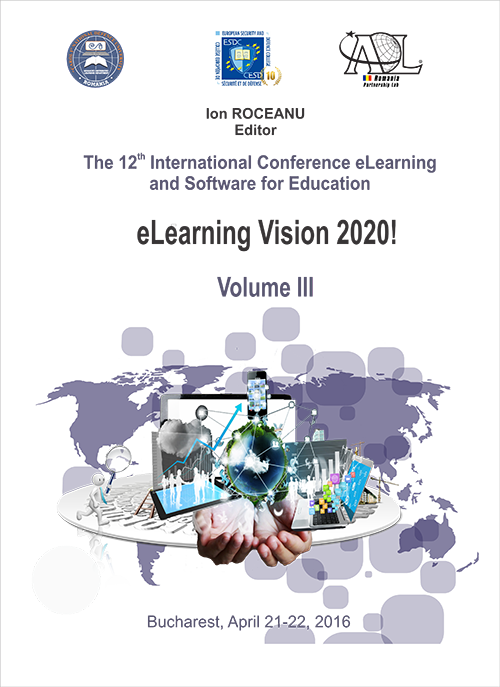AUGMENTED REALITY IN ROMANIAN SCIENCE EDUCATION PROS AND CONS
AUGMENTED REALITY IN ROMANIAN SCIENCE EDUCATION PROS AND CONS
Author(s): Dana Crăciun, Mădălin BunoiuSubject(s): ICT Information and Communications Technologies, Sociology of Education
Published by: Carol I National Defence University Publishing House
Keywords: science education; augmented reality; 21st century skills; open online educational resources;
Summary/Abstract: The use of ICT in education through the integration of Web 2.0 applications and open online education resources leads to an increase in the motivation and involvement of students in their own learning process, promoting a collaborative-participative learning and facilitating the development of necessary 21st century skills (learning and innovation skills; information, media, and technology skills; life and career skills; adaptability; complex communication/social skills; non-routine problem solving; self-management/self-development; and systems thinking).The use of the aforementioned resources in science education through various devices (computers, smartphones, or tablets) determines teachers to continuously adapt their perspective upon the design and management of the teaching process and to acquire new professional and transversal skills, since an exemplary science education can offer a rich context to develop most of the necessary 21st century skills. From a pedagogical perspective, the use of new media is of outmost importance to support learning and to obtain educational benefits which can be a result of an enrichment/extension/completion of the learning experiences offered to students in the real world with those based on virtual reality. We refer here to a new visualization option offered to science education through ICT, namely augmented reality (AR). Nowadays AR applications are only occasionally used in science education, being mainly seen as a technology for entertainment and informal education. Nevertheless, this visualization technology has a great potential for formal education, developing life skills and facilitating new learning experiences. Regardless of the visualization technology used, its teaching value derives from the way teachers are able to direct learning experience through the proposed instructional design, starting from the desired learning outcomes. For science education, we refer here to the collaborative-participative experiences which are the result of applying teaching methods such as investigation, observation, peer coaching, jigsaw, etc.
Journal: Conference proceedings of »eLearning and Software for Education« (eLSE)
- Issue Year: 12/2016
- Issue No: 03
- Page Range: 193-199
- Page Count: 7
- Language: English

